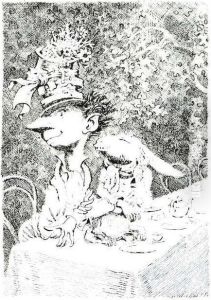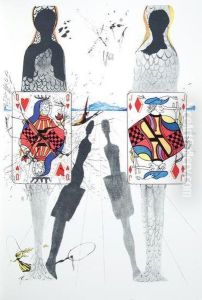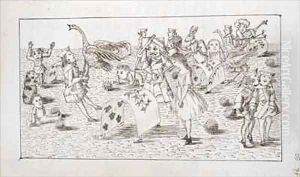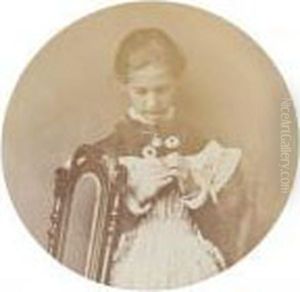Charles Lutwidge (Lewis Carroll) Dodgson Paintings
Charles Lutwidge Dodgson, better known by his pen name Lewis Carroll, was a British writer, mathematician, logician, Anglican deacon, and photographer. Born on January 27, 1832, in Daresbury, Cheshire, England, Dodgson was the eldest son and third child in a family of eleven children. His father was Charles Dodgson, a clergyman, and his mother was Frances Jane Lutwidge. The young Dodgson showed talent in mathematics and writing from an early age. He attended Richmond Grammar School and then Rugby School before enrolling at Christ Church, Oxford, in 1851. He excelled in his studies, particularly in mathematics, and graduated with a Bachelor of Arts degree in 1854.
Dodgson remained at Christ Church after his graduation and became a mathematics lecturer. His academic career was distinguished, and he wrote several books on mathematics and logic. Despite his success in these fields, he is best known for his works of fiction, especially 'Alice's Adventures in Wonderland' (1865) and its sequel 'Through the Looking-Glass' (1871). These books were inspired by Alice Liddell, the daughter of the Dean of Christ Church, whom Dodgson knew well. The stories of Alice's fantastical adventures have captivated readers for generations and have been translated into numerous languages.
As a writer, Carroll is noted for his facility at word play, fantasy, and literary nonsense, which has delighted readers young and old. Alongside his literary pursuits, Dodgson was a pioneering photographer, especially of children, and he is considered one of the early photographers to elevate the practice to an art form. However, his interest in photography waned in later years as he focused more on his writing and mathematical work.
Though he never married, Dodgson's personal life was punctuated by his relationships with young girls, which have been the subject of much speculation and analysis. His friendships with children have both enchanted and caused unease, though there is no concrete evidence that these relationships were inappropriate by the standards of his time.
Lewis Carroll died on January 14, 1898, at the age of 65, due to pneumonia following influenza. He left behind a legacy that not only includes his beloved children's tales but also his contributions to mathematics, logic, and the art of photography. His work has had a lasting impact on popular culture and literature, and the surreal world of Alice has become an integral part of the Western literary canon.



